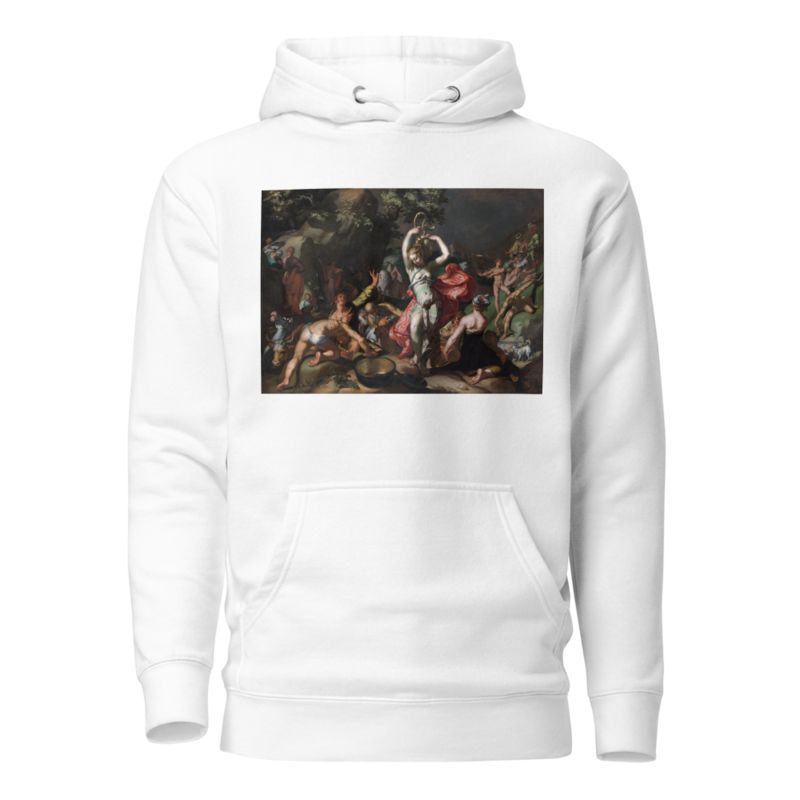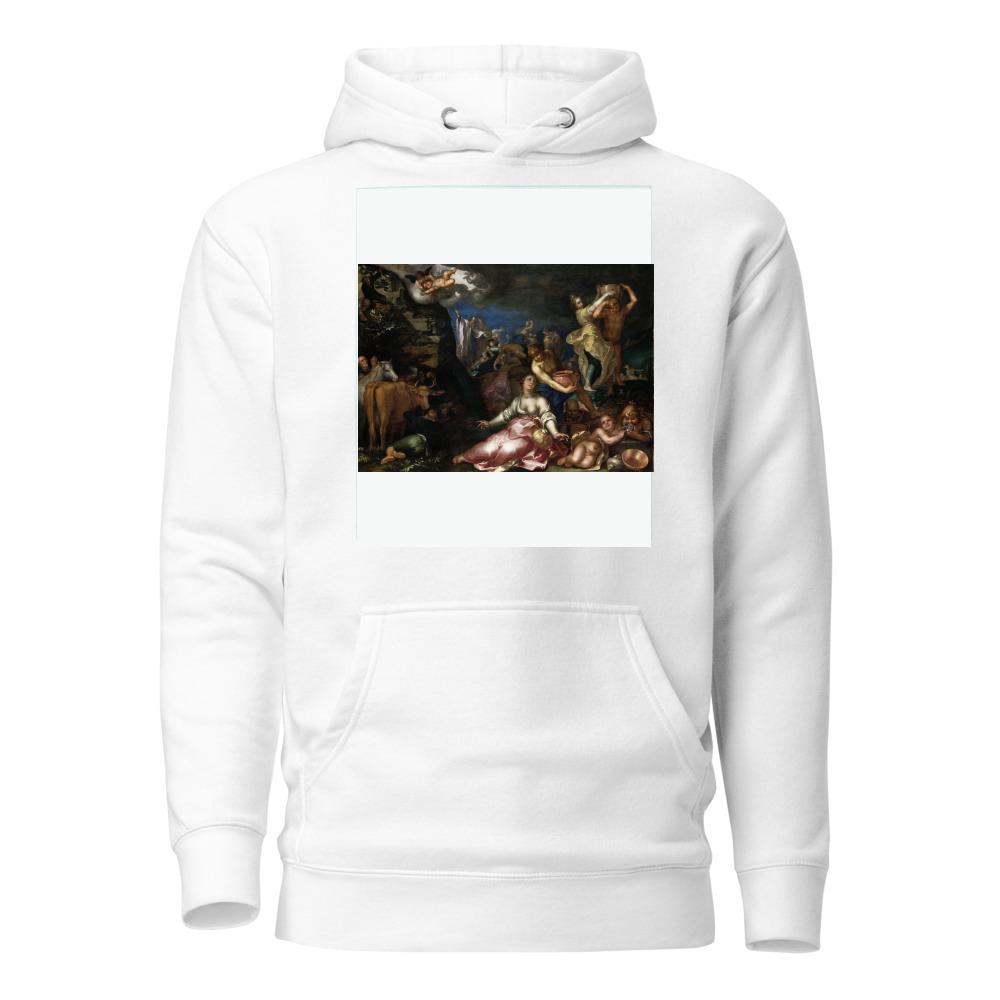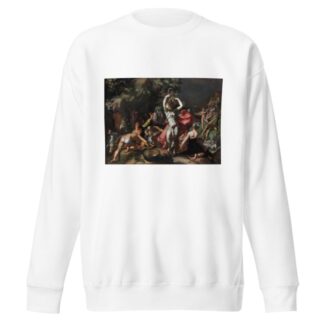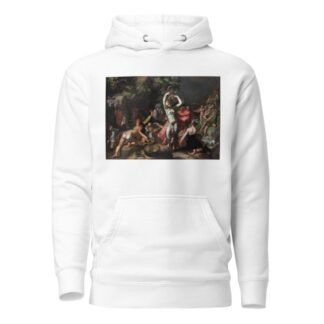Description
Moses Striking the Rock by Abraham Bloemaert printed on a Hoodie
Extended, contorted, and preternaturally muscled bodies are a hallmark of Bloemaert’s style, which art historians refer to as Mannerism. In the middle ground at left, nearly hidden in shadow, Moses strikes a rock to provide water for the Israelites during their flight from Egypt. But other figures such as the monumental bare-breasted woman with a water pitcher on her back overshadow the ostensible subject, revealing the painter’s priority to be the depiction of a variety of idealized bodies inspired by a dialogue with contemporary Italian art.
About the Hoodie
Modern fit
It provides a more tailored look than a regular fit
Comfortable
The fabric and fit of this item are extra comfy
Tear-away tag
Easily removable tear-away tag that allows you to add a custom inside label
Premium quality
The product is made from premium, high-quality materials
Classic unisex hoodie with a front pouch pocket and matching flat drawstrings. The 100% cotton exterior makes this hoodie soft to the touch.
- 65% ring-spun cotton, 35% polyester
- Charcoal Heather is 60% ring-spun cotton, 40% polyester
- Carbon Grey is 55% ring-spun cotton, 45% polyester
- 100% cotton face
- Fabric weight: 8.5 oz./yd.² (288.2 g/m²)
- Front pouch pocket
- Self-fabric patch on the back
- Matching flat drawstrings
- 3-panel hood
- Tear-away tag
Abraham Bloemaert (1564-1651)
Abraham Bloemaert was a Dutch painter and printmaker in etching and engraving. He was initially working in the style of the “Haarlem Mannerists”, but in the 16th century altered his style in line with the new Baroque style that was then developing. He mostly painted history subjects and some landscapes. He was an important teacher, who trained most of the Utrecht Caravaggisti, at least for a period.
Bloemaert was born in Gorinchem, Habsburg Netherlands, the son of the architect Cornelis Bloemaert I, who moved his family to Utrecht in 1575, where Abraham was first a pupil of Gerrit Splinter (pupil of Frans Floris) and of Joos de Beer. From the age of 15 or 16, he then spent three years in Paris from 1581–1583, studying six weeks under a Jehan Bassot (possibly Jean Cousin the Younger) and then under a Maistre Herry. While in the School of Fontainebleau he received further training from his fellow countryman Hieronymus Francken. He returned to Utrecht in 1583, just before the French Wars of Religion began, which destroyed much of the work at the Chateau of Fontainebleau.
When his father was appointed city architect (Stads-bouwmeester) in Amsterdam 1591 he accompanied him there, and on his father’s death in 1593 returned finally to Utrecht, where he set up a workshop and in 1594 became dean (“deken”) of the “zadelaarsgilde”, as from 1367 the painters were included in the saddlemaker’s guild, with no Guild of St. Luke of their own. In 1611, along with the two other leading Utrecht painters, Joachim Wtewael and Paulus Moreelse, he was one of the founders of the Utrecht Guild of Saint Luke (St Lucas-gilde) a new Utrecht painters’ guild, and became its deken in 1618. Many of Bloemaert’s paintings were commissioned by Utrecht’s clandestine Catholic churches. He died in Utrecht.
Among his many pupils were his four sons, Hendrick, Frederick, Cornelis, and Adriaan (all of whom achieved considerable reputation as painters or engravers). The RKD also lists Jan Aerntsz de Hel, Abraham Jacobsz van Almeloveen, Cornelius de Beer, Nicolaes van Bercheyck, Jan van Bijlert, the two Boths, the two Honthorsts, Leonaert Bramer, Bartholomeus Breenbergh, Hendrick ter Brugghen, Jacob Gerritsz Cuyp, Willem van Drielenburg, Wybrand de Geest, Nicolaus Knüpfer, Hendrik Munnicks, Frederick Pithan, Cornelis van Poelenburch, Henrik Schook, Anthoni Ambrosius Schouten, Robert Jansz Splinter, Matthias Stom, Herman van Swanevelt, Dirck Voorst, Quintijnus de Waerdt, Jan Baptist Weenix, and Peter Petersz van Zanen.






Reviews
There are no reviews yet.